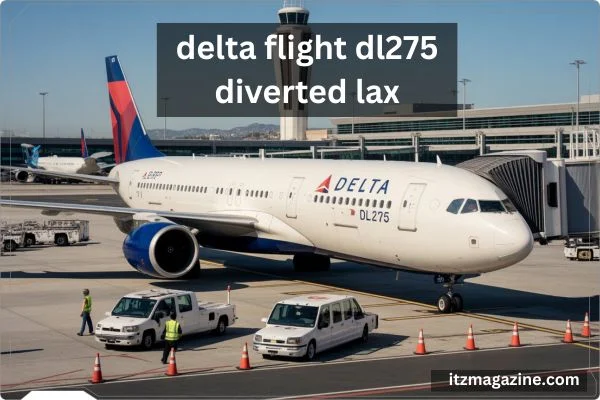Introduction
May 28, 2025 Delta Air Lines flight DL275 (a long-haul flight on an Airbus A350-900) was diverted at LAX due to a major technical issue. This case shows how effective safety measures and on-board decision-making save lives of passengers and crew in case of unforeseen system glitches.
Flight & Diversion Overview
- Flight DL275 took off its departure (which was reported to be Detroit Metropolitan Wayne County Airport, DTW) to Tokyo Haneda Airport (HND).
- Some five hours into the route, as it flew at the North-Pacific/ Alaska sector, the flight crew noticed unusual readings in engine-anti-ice system of one of its engines, which was Rolls-Royce Trent XWB.
- The malfunction being as extreme as it was, and the plane being still in the distant oceanic airspace, the crew defeated their options to land at LAX. The plane was safely landed at LAX at the early hours of the morning.
What Went Wrong: The Technical Failure?
The cause of the diversion was a malfunction in the engine anti-ice system, which was an important safety system in the case of trans-oceanic flights at high altitudes.
- Anti-ice system- This system utilizes bleed air in the engine compressor to freeze-off ice on vital parts of the engine ( fan blades, inlet guide vanes ) in cold weather.
- The sensor readings on the case of DL275 showed the decrease in the bleed-air flow, the decline in temperature, and the actuator/valve problems in the anti-ice system. These problems reduced the capacity of the system to guard the engine against accretion of ice.
- Since the aircraft was flying at an isolated part of the Pacific and Alaska area, the decision to fly without complete anti-ice systems would have put the operation beyond tolerated safety limits.
Why LAX Was Chosen?
The obvious question would be: with the site of the failure, why fly all the way to delta flight dl275 diverted lax instead of a more nearby airport (as in Anchorage or Seattle)? There are a number of operational factors which shaped the choice:
- When handling an engine-related technical fault, LAX is one of the main Delta hubs fully equipped with certified maintenance support of airplanes with A350-900 and Rolls-Royce Trent XWB engines.
- The airport facilities (long runways, the work with big wide-body airplanes), and the support resources preconditioned LAX to be an appropriate place of unscheduled maintenance and onward passenger accommodation.
- Delta minimised the risk of additional operational by shunning a lesser-equipped airport in favor of a well-equipped hub, the re-routing of passengers.
Passenger Experience & Operational Impact
- The crew evaluated the necessity of the diversion and notified the passengers of it, who were not notified of the disruption in advance; this negative consequence was offset by the fact that the change in route and the delay in arrival were not dangerous.
- Operationally, such unexpected diversions are very expensive in terms of cost of fuel/flight time, maintenance downtime, passenger care and rerouting. This incident is estimated to have cost Delta around 2- 2.5 million US dollars.
- Safety-wise, the accident highlights how the current aircraft systems, training of crew, and processes of airlines intersect to control the in-flight technical emergencies before they worsen.
Lessons on Safety and Implications of the Future
- The accident demonstrates the criticalness of redundancy and proactive control of critical systems (anti-ice) under difficult conditions (high altitude, over oceans).
- It shows that the further possible choice can be wiser in case the reliability of components is doubtful, and the way to a maintenance-capable airport may be considered.
- In the case of airlines, the incident shows why predictive maintenance and sensor-data analysis are valuable in order to identify degradations in time before they are flight-critical. There is industry commentary that in-flight diversion could have been avoided were there to have been earlier detection of anti-ice system degradation.
- To passengers, diversions are inconvenient but they indicate that the safety of the passengers is the number one priority-time and money rank below safe flight operations.
Conclusion
The diversion of Flight DL275 to LAX was predetermined by an evident technical failure the anti-ice system of one of the Trent XWB engines was deteriorated during the flight through distant oceanic airspace. The diversion decision by the crew along with the infrastructure and protocols used by Delta guaranteed a safe result. Although it is costly and disruptive, the event is a powerful lesson on the complexity of the modern aviation system, the risks of long-haul/high-altitude missions, and the importance of risk-management.
I would be happy to find official releases by Delta or the regulatory authority (e.g. Federal Aviation Administration) on this incident or give a timeline (with UTC times) of the diversion. Would you like that?
Read More Informative Articles Visit This Site: ItzMagazine

